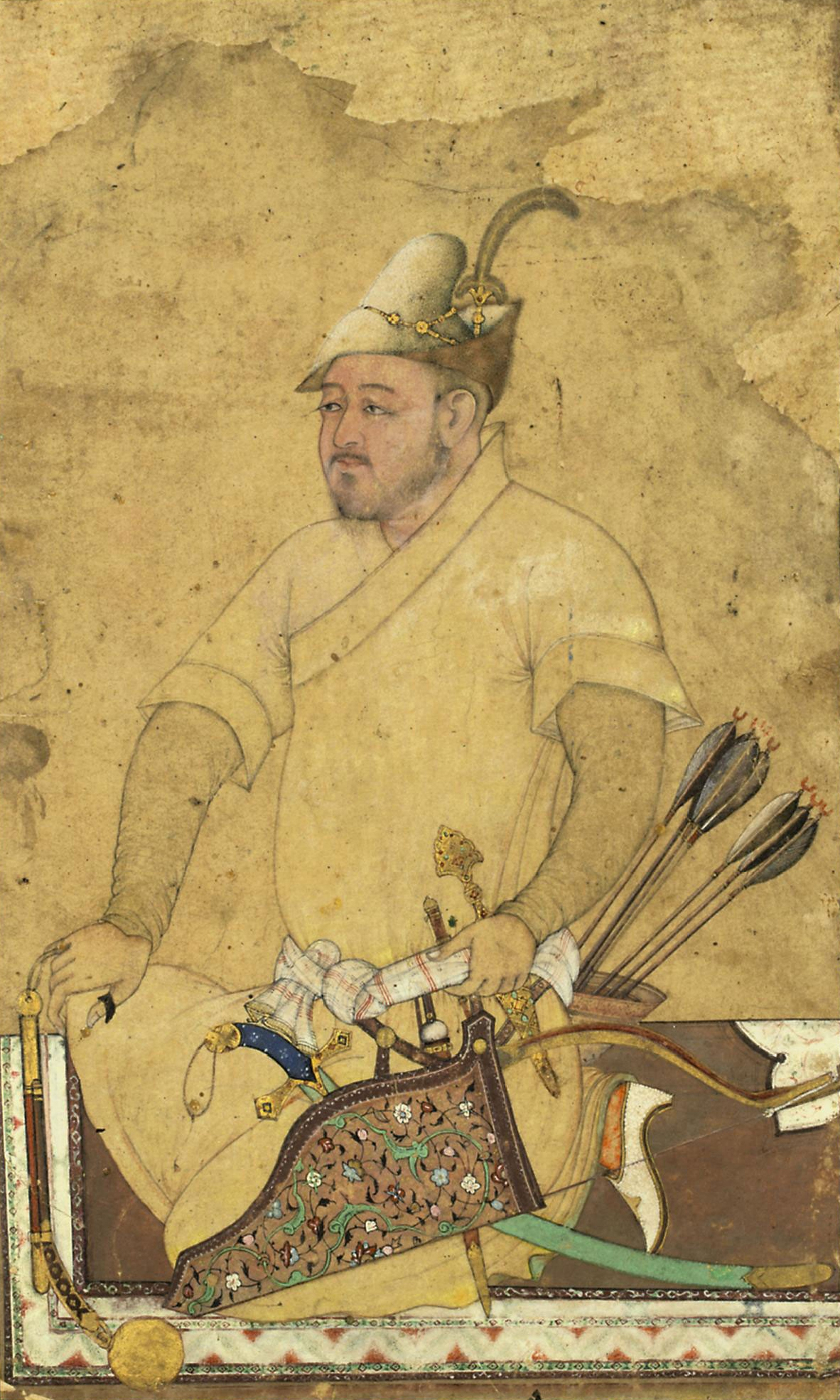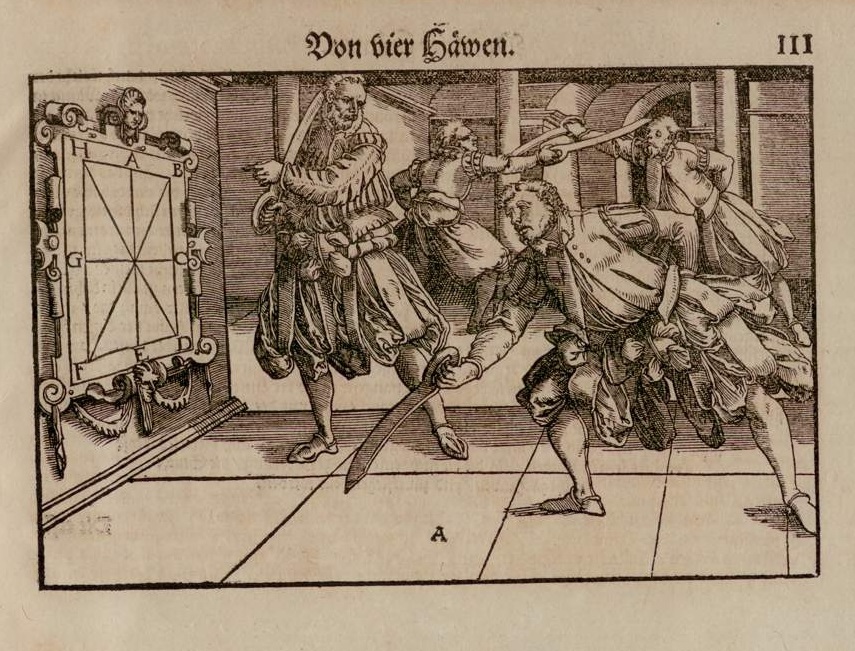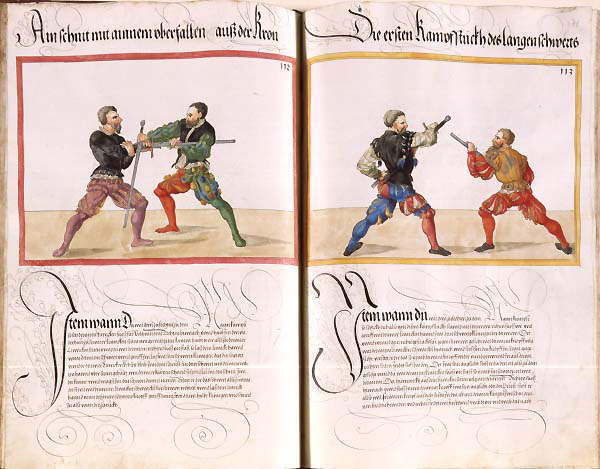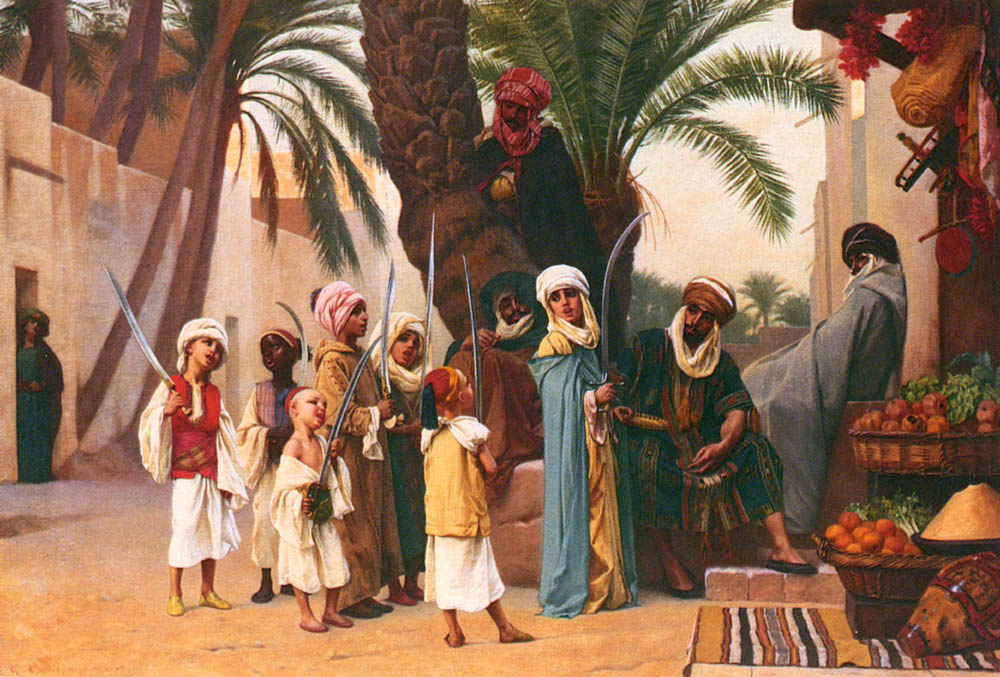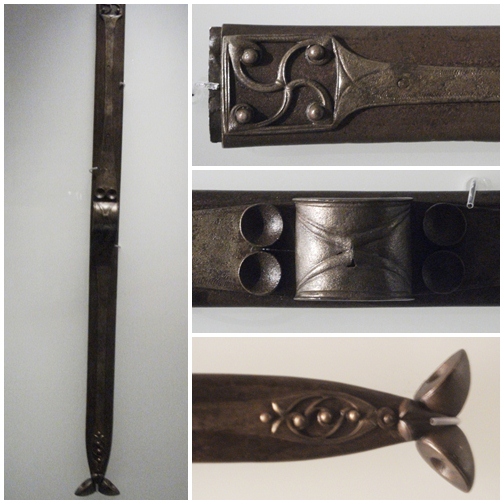|
Acinaces
The acinaces, also spelled akinakes (Ancient Greek, Greek ) or akinaka (unattested Old Persian ''*akīnakah'', Sogdian language, Sogdian ''kynʼk'') is a type of dagger or xiphos (short sword) used mainly in the first millennium BCE in the eastern Mediterranean Basin, especially by the Medes, Scythians, Persians and Caspians, then by the Greeks. The acinaces, of Scythian origin, but made famous by the Persians, rapidly spread throughout the ancient history, ancient world. The ancient Rome, Romans believed that this weapon originated with the Medes. The acinaces is typically 40–60 cm (14-18 in.) in length and double-edged,Blair, Claude and Tarassuk, Leonid, eds. (1982). ''The Complete Encyclopedia of Arms and Weapons''. p.17. Simon & Schuster. . and although there is no universal design, the Guard (weapon), guard may be lobed with the hilt resembling that of a bollock dagger, or the Hilt#Pommel, pommel may be split or of the "antenna" type. The scabbard as much as anything ... [...More Info...] [...Related Items...] OR: [Wikipedia] [Google] [Baidu] |
Arzhan
Arzhan (russian: Аржан) is a site of early Scythian cultures, Scythian kurgan burials in the Tuva Republic, Russia, some northwest of Kyzyl. It is on a high plateau traversed by the Uyuk River, a minor tributary of the Yenisei River, in the region of Tuva. The "Arzhan culture" is considered as forming the initial Scythian period (8th–7th century BC), and precedes the Pazyryk culture. The remains of Arzhan are among the earliest of all known Scythian cultures, which has led to suggestions that it is the origin of the Scythian "Animal Style". Arzhan kurgan Arzhan-1 was excavated by M. P. Gryaznov in the 1970s, establishing the origins of Scythian culture in the region in the 9th to 8th centuries BCE. Further excavations were conducted in 1997 and in 1998-2003 (Arzhan-2). The excavations showed burials with rich grave goods including horses and gold artifacts. There are several hundred kurgans, arranged in parallel chains. Arzhan-2 turned out to be an undisturbed burial; ... [...More Info...] [...Related Items...] OR: [Wikipedia] [Google] [Baidu] |
Guard (weapon)
The hilt (rarely called a haft or shaft) of a knife, dagger, sword, or bayonet is its handle, consisting of a guard, grip and pommel. The guard may contain a crossguard or quillons. A tassel or sword knot may be attached to the guard or pommel. Pommel The pommel (Anglo-Norman "little apple") is an enlarged fitting at the top of the handle. They were originally developed to prevent the sword from slipping from the hand. From around the 11th century in Europe they became heavy enough to be a counterweight to the blade. This gave the sword a point of balance not too far from the hilt allowing a more fluid fighting style. Depending on sword design and swordsmanship style, the pommel may also be used to strike the opponent (e.g., using the Mordhau technique). Pommels have appeared in a wide variety of shapes, including oblate spheroids, crescents, disks, wheels, and animal or bird heads. They are often engraved or inlayed with various designs and occasionally gilt and mou ... [...More Info...] [...Related Items...] OR: [Wikipedia] [Google] [Baidu] |
Shamshir
A shamshir ( fa, شمشیر) is a type of Persian/Iranian sword with a radical curve. The name is derived from the Persian word ''shamshīr'', which means "sword". The curved "scimitar" sword family includes the shamshir, kilij, talwar, pulwar and nimcha. A ''shamshir shekargar'' ( fa, شمشیر شکارگر, shamshir-e shekârgar, lit=hunters' sword or hunting sword) is the same as a ''shamshir'', except the blade is engraved and decorated, usually with hunting scenes. Description Originally, Persian swords were straight and double edged. Curved Turko-Mongol sabers, sabre blades were Central Asian in origin. There is considerable disagreement between historians as to when these curved blades were first introduced from Central Asia into Iran, Persia, and over what period they became adopted and modified into the recognizable Shamshir. Curved blades began to appear in Persia in the 9th century, when these weapons were used by soldiers in the Greater Khorasan, Khorasan region of ... [...More Info...] [...Related Items...] OR: [Wikipedia] [Google] [Baidu] |
Katana
A is a Japanese sword characterized by a curved, single-edged blade with a circular or squared guard and long grip to accommodate two hands. Developed later than the ''tachi'', it was used by samurai in feudal Japan and worn with the edge facing upward. Since the Muromachi period, many old ''tachi'' were cut from the root and shortened, and the blade at the root was crushed and converted into ''katana''. The specific term for ''katana'' in Japan is ''uchigatana'' (打刀) and the term ''katana'' (刀) often refers to single-edged swords from around the world. Etymology and loanwords The word ''katana'' first appears in Japanese in the '' Nihon Shoki'' of 720. The term is a compound of ''kata'' ("one side, one-sided") + ''na'' ("blade"), in contrast to the double-sided '' tsurugi''. See more at the Wiktionary entry. The ''katana'' belongs to the ''nihontō'' family of swords, and is distinguished by a blade length (''nagasa'') of more than 2 ''shaku'', approximately . ' ... [...More Info...] [...Related Items...] OR: [Wikipedia] [Google] [Baidu] |
Society Of Jesus
, image = Ihs-logo.svg , image_size = 175px , caption = ChristogramOfficial seal of the Jesuits , abbreviation = SJ , nickname = Jesuits , formation = , founders = , founding_location = , type = Order of clerics regular of pontifical right (for men) , headquarters = Generalate:Borgo S. Spirito 4, 00195 Roma-Prati, Italy , coords = , region_served = Worldwide , num_members = 14,839 members (includes 10,721 priests) as of 2020 , leader_title = Motto , leader_name = la, Ad Majorem Dei GloriamEnglish: ''For the Greater Glory of God'' , leader_title2 = Superior General , leader_name2 = Fr. Arturo Sosa, SJ , leader_title3 = Patron saints , leader_name3 = , leader_title4 = Ministry , leader_name4 = Missionary, educational, literary works , main_organ = La Civiltà Cattoli ... [...More Info...] [...Related Items...] OR: [Wikipedia] [Google] [Baidu] |
Dussack
A dusack (also ''dusägge'' and variants, from Czech ''tesák'' "cleaver; hunting sword", lit. "fang") is a single-edged sword of the cutlass or sabre type, in use as a side arm in Germany and the Habsburg monarchy during the 16th to 17th centuries, as well as a practice weapon based on this weapon used in early modern German fencing. Military sidearm The Czech term entered German usage in the Hussite Wars, after the sidearm used by the Hussites. In the late 16th century, ''Dusägge'' could refer to a type of weapon combining a sabre blade with the hilt of a sidesword (the German ''Degen''), also known as ''Säbel auf Teutsch gefasst'' ("sabre fitted in the German manner"). The ''Dusägge'' in this sense was used as a military sidearm; e.g. in 1579, Styria records delivery of some 700 ''Dusäggen'' by local bladesmiths, besides payment of 40 ''Dusäggen'' delivered from Passau, as part of the preparation for the war against the Turks under Archduke Charles II. The German ... [...More Info...] [...Related Items...] OR: [Wikipedia] [Google] [Baidu] |
Paulus Hector Mair
Paulus Hector Mair (1517–1579) was a German civil servant fencing master from Augsburg. He collected Fechtbücher and undertook to compile all knowledge of the art of fencing in a compendium surpassing all earlier books. For this, he engaged the painter Jörg Breu the Younger, as well as two experienced fencers, whom he charged with perfecting the techniques before they were painted. The project was very costly, taking a full four years, and according to Mair, consumed most of his family's income and property. Three versions of his compilation, and one later, less extensive manuscript, have been preserved. Not only did Mair spend huge sums on his collections and on his projects, he also had a very expensive lifestyle, frequently hosting receptions for the more important burghers of Augsburg. His own income was not sufficient for this, and during many years, he misappropriated funds from the city treasury, with the supervision of which he had been entrusted since 1541. His embezz ... [...More Info...] [...Related Items...] OR: [Wikipedia] [Google] [Baidu] |
Binomial Nomenclature
In taxonomy, binomial nomenclature ("two-term naming system"), also called nomenclature ("two-name naming system") or binary nomenclature, is a formal system of naming species of living things by giving each a name composed of two parts, both of which use Latin grammatical forms, although they can be based on words from other languages. Such a name is called a binomial name (which may be shortened to just "binomial"), a binomen, name or a scientific name; more informally it is also historically called a Latin name. The first part of the name – the '' generic name'' – identifies the genus to which the species belongs, whereas the second part – the specific name or specific epithet – distinguishes the species within the genus. For example, modern humans belong to the genus ''Homo'' and within this genus to the species ''Homo sapiens''. ''Tyrannosaurus rex'' is likely the most widely known binomial. The ''formal'' introduction of this system of naming species is credit ... [...More Info...] [...Related Items...] OR: [Wikipedia] [Google] [Baidu] |
Scimitar
A scimitar ( or ) is a single-edged sword with a convex curved blade associated with Middle Eastern, South Asian, or North African cultures. A European term, ''scimitar'' does not refer to one specific sword type, but an assortment of different Eastern curved swords inspired by types introduced to the Middle East by Central Asian ghilmans. These swords include the Persian shamshir (the origin of the word scimitar), the Arab saif, the Indian talwar, the North African nimcha, and the Turkish kilij. All such swords are originally derived from earlier curved swords developed in Turkic Central Asia (Turkestan). Etymology The English term ''scimitar'' is attested from the mid-16th century and derives from either the Middle French ''cimeterre'' (15th century) or from the Italian ''scimitarra''. The ultimate source of these terms is corruptions of the Persian ''shamshir.'' ''Scimitar'' became used to describe all curved oriental blades, in contrast to the straight and double edged ... [...More Info...] [...Related Items...] OR: [Wikipedia] [Google] [Baidu] |
Medieval Latin
Medieval Latin was the form of Literary Latin used in Roman Catholic Western Europe during the Middle Ages. In this region it served as the primary written language, though local languages were also written to varying degrees. Latin functioned as the main medium of scholarly exchange, as the liturgical language of the Church, and as the working language of science, literature, law, and administration. Medieval Latin represented a continuation of Classical Latin and Late Latin, with enhancements for new concepts as well as for the increasing integration of Christianity. Despite some meaningful differences from Classical Latin, Medieval writers did not regard it as a fundamentally different language. There is no real consensus on the exact boundary where Late Latin ends and Medieval Latin begins. Some scholarly surveys begin with the rise of early Ecclesiastical Latin in the middle of the 4th century, others around 500, and still others with the replacement of written Late Latin ... [...More Info...] [...Related Items...] OR: [Wikipedia] [Google] [Baidu] |
Latin
Latin (, or , ) is a classical language belonging to the Italic branch of the Indo-European languages. Latin was originally a dialect spoken in the lower Tiber area (then known as Latium) around present-day Rome, but through the power of the Roman Republic it became the dominant language in the Italian region and subsequently throughout the Roman Empire. Even after the fall of Western Rome, Latin remained the common language of international communication, science, scholarship and academia in Europe until well into the 18th century, when other regional vernaculars (including its own descendants, the Romance languages) supplanted it in common academic and political usage, and it eventually became a dead language in the modern linguistic definition. Latin is a highly inflected language, with three distinct genders (masculine, feminine, and neuter), six or seven noun cases (nominative, accusative, genitive, dative, ablative, and vocative), five declensions, four verb conjuga ... [...More Info...] [...Related Items...] OR: [Wikipedia] [Google] [Baidu] |
Scabbard
A scabbard is a sheath for holding a sword, knife, or other large blade. As well, rifles may be stored in a scabbard by horse riders. Military cavalry and cowboys had scabbards for their saddle ring carbine rifles and Lever action, lever-action rifles on their horses for storage and protection. Scabbards have been made of many materials over the millennia, including leather, wood, and metals such as brass or steel. Most commonly, sword scabbards were worn suspended from a sword belt or shoulder belt called a baldric. Antiquity Wooden scabbards were typically covered in fabric or leather; the leather versions also usually bore metal fittings for added protection and carrying ease. Japanese blades typically have their sharp cutting edge protected by a wooden scabbard called a Japanese sword mountings#Saya, saya. Many scabbards, such as ones the Greeks and Romans used, were small and light. It was designed for holding the sword rather than protecting it. All-metal scabbards were ... [...More Info...] [...Related Items...] OR: [Wikipedia] [Google] [Baidu] |

